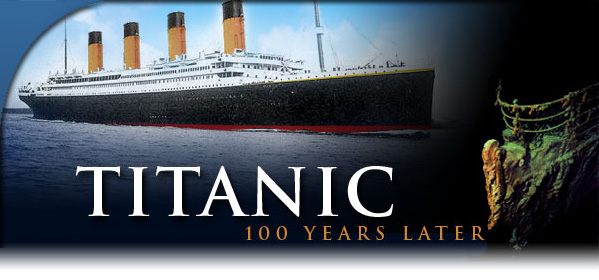Error processing SSI file
Titanic - 100 Years Later
by Dr. James P. Delgado
Maritime Heritage Program Director
NOAA Office of National Marine Sanctuaries
A hundred years after its sinking, Titanic rests on a muddy plain, torn apart, scattered, slowly eroding into the eternal darkness of the sea. It is a ghost town, its well-preserved decks and artifacts a powerful reminder of the ship as it was, the people who lived and worked on it, and its loss.
Today, the impending centenary of the Titanic disaster features prominently in the news. But why - a hundred years later - is Titanic still making headlines?
In the popular imagination, the Titanic tragedy is seen as the end of an era, and the beginning of a new, more terrible time in which people increasingly paid the price for technological advancement in an expanding and competitive world.
At the time, Titanic's sinking was a different kind of story - a news event that captured headlines in what was practically "real time." It was reported "as it happened" - the intercepted wireless calls for help, and the resultant pause for news as the rescue ship, Carpathia, steamed to New York, without revealing how many, or who, had died. The stories that then emerged - of hubris, pathos, heroism, and tragedy - are powerful and human stories, that echo our timeless myths.
But when the ship was rediscovered on Sept. 1, 1985, Titanic provided humanity with a powerful, physical reminder that this was not just a story, not a myth, but something real and terrible.
It is in that physical connection to the past that Titanic is most powerful. Expeditions to the sunken hulk have brought back increasingly graphic images as well as artifacts. Some 400 visitors have gone into the abyss to see this sunken museum at the bottom of the sea. I understand that compulsion to go, look, and learn. I understand it as an archaeologist, as a former museum director, and as someone who works to protect and share the special places in the oceans that we as society decide to set apart and save as underwater parks and marine sanctuaries.
After 27 years, we have learned much about Titanic, but there remains much to learn.
In my visits to the wreck, most recently in 2010 as part of a team conducting the first full mapping of the site, I have been struck, both scientifically and emotionally, by what I have seen. I am amazed by the sea's power to not only claim Titanic, but to also hold it as a monument, a memorial, and an archaeological site.
The archaeology of Titanic can, and should be, more than simply understanding what happened. It should be an exposition to those who were lost that night, especially those whose stories have hitherto not been heard because they were poor or did not speak English, or because they were swallowed by the sea - and, seemingly, by history. The well-preserved remains of Titanic, and a study of what their intact baggage can tell us, give modern archaeologists a chance to rectify some of that injustice and give those people a voice.
NOAA's Office of National Marine Sanctuaries is NOAA's lead office for dealing with the wreck of RMS Titanic. The Office of National Marine Sanctuaries works closely with the Office of the General Counsel, International and the Office of Ocean Exploration and Research in NOAA as well as other U.S. government agencies such as the Department of State, the Department of Justice, the U.S. Coast Guard, and the National Park Service in carrying out the responsibilities that both Congress and the United States District Court  have requested NOAA to assume. have requested NOAA to assume.
The Maritime Heritage Program in the Office of National Marine Sanctuaries, working with the Monitor National Marine Sanctuary carries out the Office's Titanic responsibilities. These include coordinating NOAA's relationship with all private and academic groups interested in or working on Titanic, carrying out NOAA's responsibilities to oversee and report to the District Court, with the Department of Justice, on the status and actions surrounding Titanic and some 5,000 artifacts recovered from the wreck by RMS Titanic, Inc. , and participating in ongoing scientific, archaeological research on the Titanic site. The Maritime Heritage Program's director, Dr. James Delgado, and the superintendent of Monitor NMS, David Alberg, joined the privately-funded 2010 scientific expedition , and participating in ongoing scientific, archaeological research on the Titanic site. The Maritime Heritage Program's director, Dr. James Delgado, and the superintendent of Monitor NMS, David Alberg, joined the privately-funded 2010 scientific expedition to Titanic, with Dr. Delgado serving as chief scientist. Dr. Delgado and the science team, including partners from Woods Hole Oceanographic Institute to Titanic, with Dr. Delgado serving as chief scientist. Dr. Delgado and the science team, including partners from Woods Hole Oceanographic Institute , the National Park Service, and RMS Titanic, Inc. are currently completing the final archaeological report for the expedition. , the National Park Service, and RMS Titanic, Inc. are currently completing the final archaeological report for the expedition.
|



